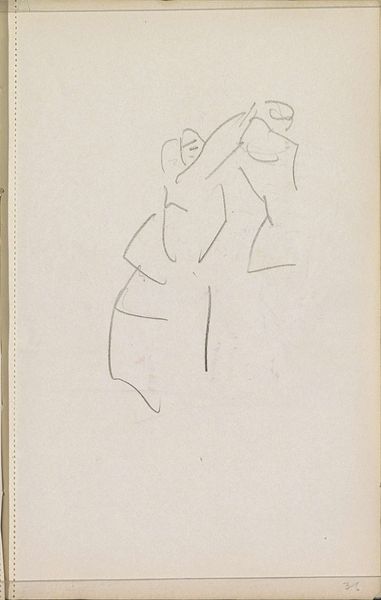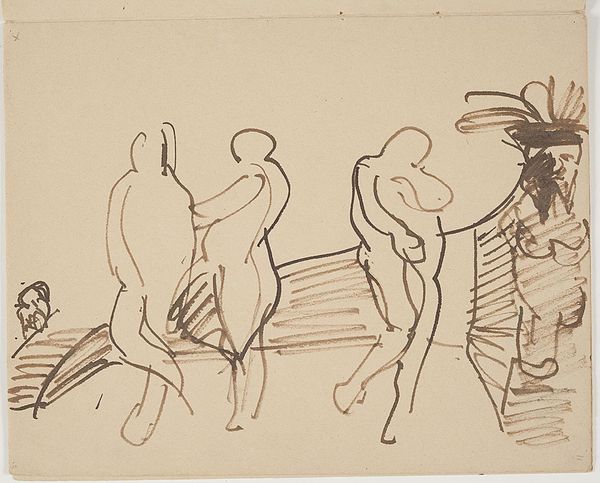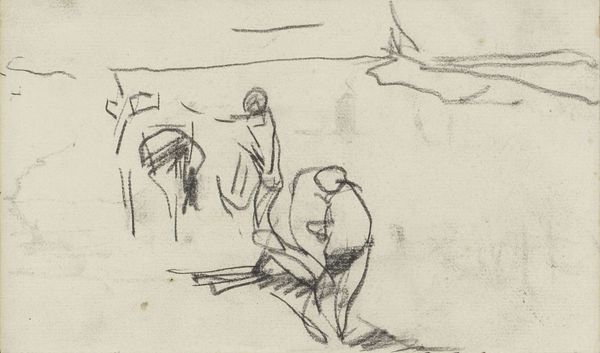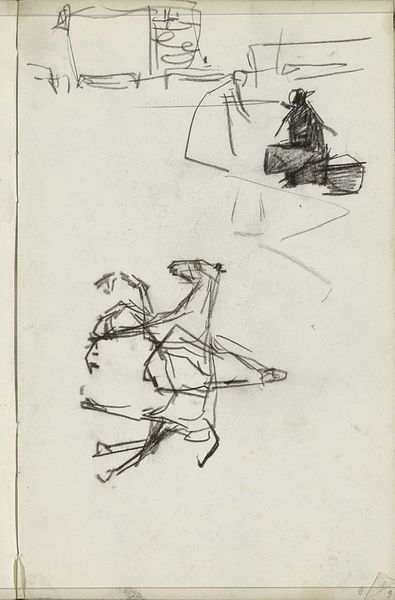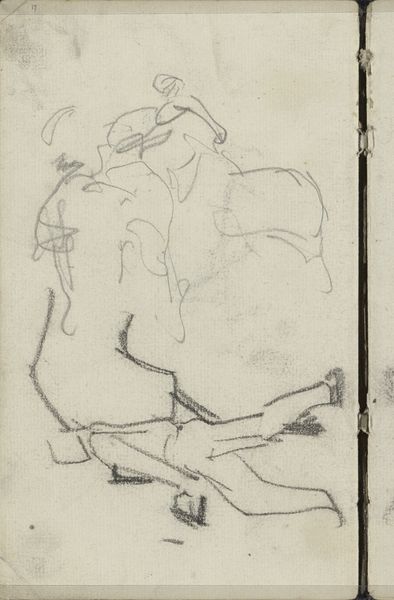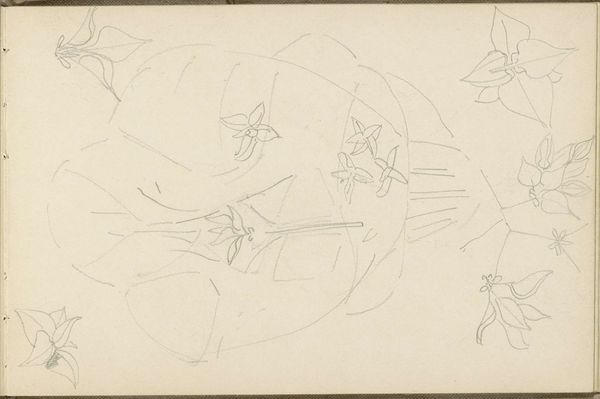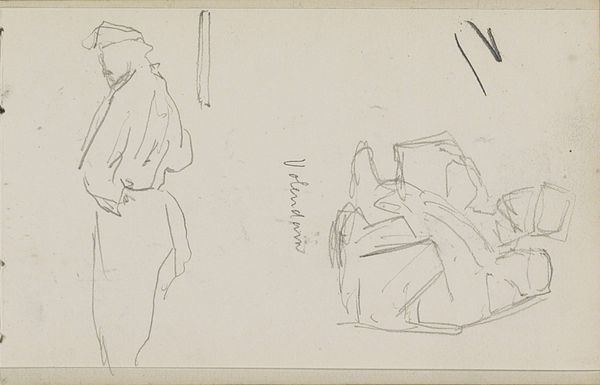
#
light pencil work
#
personal sketchbook
#
idea generation sketch
#
child
#
sketchwork
#
ink drawing experimentation
#
pen-ink sketch
#
sketchbook drawing
#
storyboard and sketchbook work
#
sketchbook art
#
initial sketch
Copyright: Rijks Museum: Open Domain
Editor: Here we have Carel Adolph Lion Cachet’s "Children Jumping Rope," created in 1896. It appears to be a pen-and-ink sketch, almost like a preliminary study. It's incredibly light and airy, capturing a sense of fleeting movement. What strikes you about the composition? Curator: Formally, the artist presents us with an intriguing exercise in line and space. Note the stark contrast between the dense cluster of lines forming the children on the right and the relative emptiness on the left, punctuated only by the sparse, almost ghostly depiction of the dog and figures. How does this deliberate imbalance influence your reading of the piece? Editor: It makes the composition feel quite dynamic, as if all the energy is concentrated on the right side, leaving the left feeling like a fading memory. But does that dynamism also highlight the sketchiness of the work, reminding us that it’s unfinished? Curator: Precisely. Consider the looping line representing the jump rope. It serves as a crucial structural element, bisecting the composition and guiding the viewer's eye across the page. This deliberate use of line transforms the humble subject of children at play into a sophisticated exploration of artistic form. How would the narrative shift if the rope were absent? Editor: Without the rope, it would simply be figures scattered across the page, losing its cohesion and sense of play. The rope ties everything together, creating a tangible connection. This has given me an understanding and appreciation of sketch works that I previously had. Thanks for highlighting how to consider their aesthetic merit. Curator: Indeed. Close attention to these formal devices provides the richest interpretation. I hope this conversation inspires continued careful examination and interpretation in your artistic exploration.
Comments
No comments
Be the first to comment and join the conversation on the ultimate creative platform.

